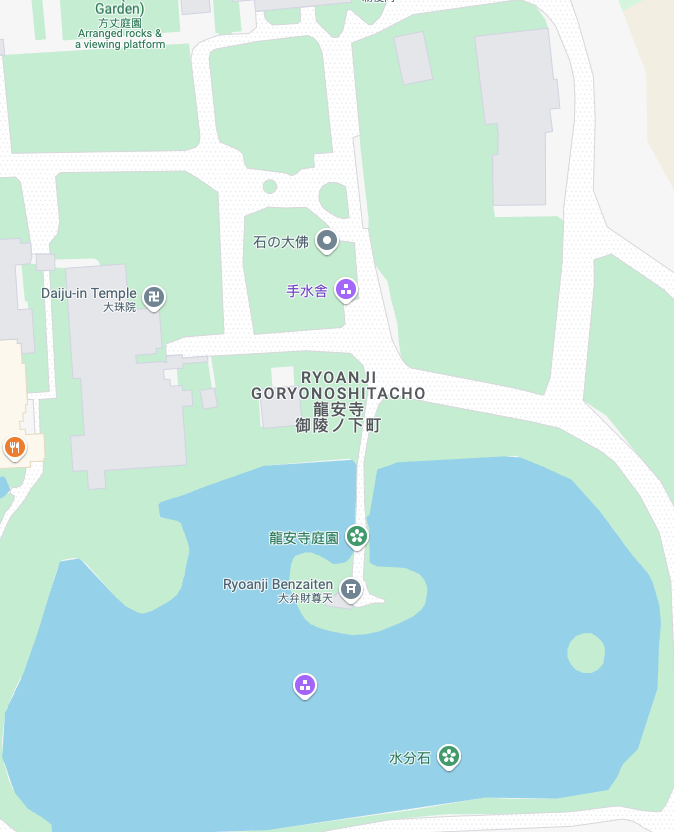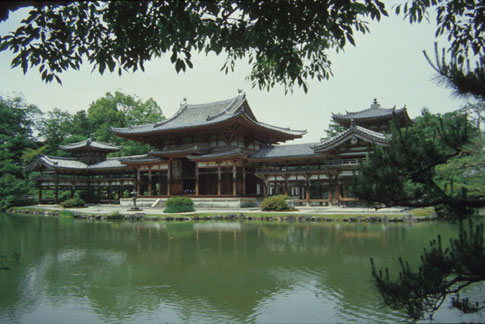
Perhaps the most famous of all Japanese dry gardens is that of Ryoan-ji: the Temple of the Peaceful Dragon. The garden is simplicity itself--fifteen rocks arranged in a rectangle of raked white gravel--but it has provoked much speculation about its meaning, its specific relationship to Zen thought, and even its origins. Although probably created in the fifteenth century, its current form may date back only to the late eighteenth or early nineteenth century. A discussion of its original appearance is included in the history section. Choose a view point from the map or click Tour the Garden for more views of this garden.
Ryoan-ji possesses what is arguably the most famous of the Zen dry gardens. It is one component of a relatively large Rinzai temple complex that includes a large pond garden called Kyoyochi, a remnant of a Fujiwara estate dating back to the eleventh or twelfth century. Hosokawa Katsumoto acquired the property in 1450 and constructed a Zen temple on the site, possibly reconstructing an older temple. Although Katsumoto's temple was burned in the Onin Wars, it was rebuilt by his son Masamoto in 1488, and the dry garden may have been created at that time. There is much debate about its origins and original form, however. Its designer is unknown, although speculation has ranged from anonymous Zen priests, to the painter Soami (which would place the date of the garden closer to 1500), to two Kyoto garden workers whose names are inscribed on one of the stones (Kotaro and Seijiro, both members of the kawaramono class). It could well have been a collaborative effort among two or three of these persons.

